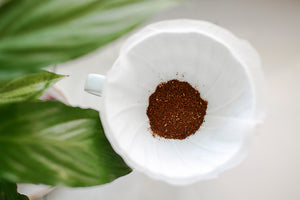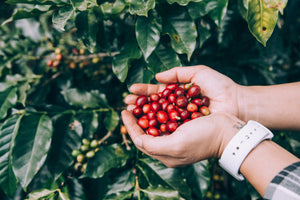
A guide to craft chocolate - part 1
We care about the coffee we drink, its origins, its supply chain, and its profile. In this three part series, Phil Wain asks why chocolate isn't yet viewed the same way, and how the craft chocolate movement is changing the landscape
Why write about chocolate for a coffee audience? Coffee has undergone a revolution in the last decade or so and the average coffeeshop or customer cares a lot more about taste, quality, ethical trade and sourcing than before. In order to learn more about great chocolate and improve the quality of chocolate sold in cafes, we need to draw parallels with coffee production. It's fair to suggest that craft chocolate is years behind speciality coffee in terms of its development, but that is changing.
We asked Spencer Hyman of Cocoa Runners his thoughts on the relationship of speciality coffee and bean to bar chocolate. “Good chocolate tastes better, is better for you and better for the planet. Would a good coffee store sell instant coffee?”
Quality of flavour
Just as many of us grew up with the taste of branded instant coffee, plenty experienced the taste of over-sweetened, additive-crammed commodity chocolate. It’s not wrong to enjoy that, of course, but there’s a whole world of flavour out there. Chocolate has more than 400 distinct flavour notes. Get yourself down to chocolate tasting and taste the bars side by side, the way you’d compare coffees. Cocoa Runners organise regular chocolate tastings at Prufrock on Leather Lane. You’d be surprised to find a range of notes: from red wine to caramel, red fruits to citrus depending on the origin of the chocolate
As Ama Uzowuru of Lucocoa puts it, “A chocolate-maker never stops discovering new flavours. Even when you think you’ve sussed out a region, or even a country, a new flavour is ready to hit you. Just like wine and coffee, different regions give different flavours and then it’s our job as makers to really pay that cacao bean the service it’s due.”
Transparency, Single Origin and Direct Trade
When we buy a bag of coffee, we can often discover information about the farm or co-operative and the region that coffee is from. When was the last time you saw this type of information on a chocolate bar or product? Choosing a bean-to-bar craft chocolate means this is more likely. As with coffee, the same issues of commodity pricing, with fluctuations based on gambling on the stock market, affect chocolate with similar alternative trade models such as fair trade and direct trade. Fair trade has the benefit of certification for customer confidence but also the drawback of cost of certification for the farmer and no premium for quality.
Bean to bar chocolate makers try to buy ethical chocolate from importers that pay a premium to growers for quality beans or deal direct with farmers (as in the case of Original Beans, for example). Why would someone who cares about direct trade or ethically sourced coffee not expect the same standards for chocolate?
In the next part of this series, Phil looks at manufacture and sourcing
Image courtesy of Cocoa Runners



